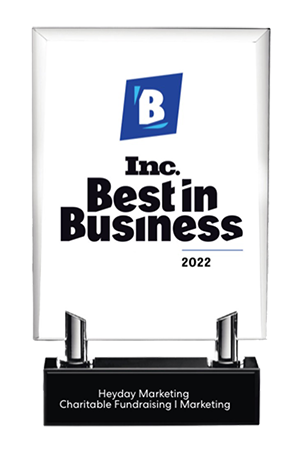Have you ever struggled to think of social media posts, or do you constantly feel stuck thinking of topics to entertain your audience with?
Content pillars are designed to avoid situations just like these. They are a great way to constantly create high-quality content that your audience most definitely will love, while staying organized and consistent.
First, any content marketing requires a strong sense of niched interest for an audience.
In fact, one of the best ways to really take your brand and its marketing on to the next level is by focusing on a specific topic your audience would really be interested in.
“Who am I creating content for?” must be the initial question you must ask yourself.
Answering this question can set a lot of things straight and avoid a huge confusion down the line, keeping you away from actually losing focus of your audience.
Gaining a clear understanding of your target audience/s and their interests must be a priority before you actually go ahead and build strategies of content to push out to them.
Once you have understood and gathered deeper insights of what your audience actually likes and dislikes, developing content pillars can then steer you into the right direction for your content marketing strategies, making it an efficient process.
So, what are content pillars?
A content pillar is an informative piece of content on a specific, or niche, topic that can be further divided into many smaller sections, pieces, or materials.
They are also known as content buckets or content categories. In a most basic form, they follow an overall theme that form a clear picture of what you do, what people can expect from you, and how they will benefit by keeping you in their loop.
By creating content pillars, large pieces of content can be turned into many smaller pieces of content to fuel the multiple channels your brand may use to communicate with your audience.
By focusing on a single pillar topic, it then becomes easier to break it down into blog posts, infographics, emails, videos, tutorials, social media posts, podcasts, and more, which can be leveraged into attracting audiences of different interests through the various channels you may choose.
Just like how a high-rise building cannot stand without its pillars, content itself may lack substance without its own pillar. This pillar is a particular theme that you will discuss or amplify in multiple smaller amounts of related content you produce.
How broad should content pillars be?
A content pillar mustn’t be too specific or else they would keep you from going further in depth about a particular topic.
Think of your old high school textbook for example, which consisted of chapters from the table of content designed to take you deeper down the sea of endless sub-topics filled with pictures and unlimited science about how fossil fuels really form.
The general idea is to never run out of things to talk about. Rather than beating around the bush to create last-minute posts that may or may not tie back to your audience, using content pillars can help you strategically build content calendars up to months in advance!
Since content pillars embody multiple themes, they will still be specific to your brand. For example:
- A fashion blogger’s content pillars could relate to street fashion, playing with colors, beauty and body positivity, confidence and mindset
- An indie theatre could focus on releasing content such as trailers, celebrity interviews, behind the scenes, promotions, movie reviews
- A bookstore’s pillars can include book releases, features on authors, cozy reading locations such coffee shops, tutorials on how to create a home into a reading-friendly environment
Here is a little more detailed scenario of brand planning for content:
- The Brand
A woman’s beauty salon specializing in hair products
- The Audience
Females aged 35-65 living in an urban high-rise city
- Audience Research
A study showed that women living in urban cities are deeply worried about the effects of constant accumulation of air pollution from vehicles does to their hair, and are interested in organic, eco-friendly, and natural solutions for hair preservations.
- A Content Pillar
Home-made remedies to wash away pollutants from hair after a day’s outing - Core Theme and Topics
How women can use natural ingredients found in supermarkets or neighborhood stores and create the right shampoo solutions for their specific hair types/styles to remove harmful pollutants; tips on washing techniques; products and ingredients to avoid applying on their hair
How to choose content pillars
- You should always start with an analysis of your own brand. Clearly knowing who you, your goals, and your values are will give you a strong and vibrant picture of where you aim to be.
- Second, be clear on whom you are speaking to, while also considering whom you are not considering an audience as. Make a clear distinction of their age, gender, ethnicity, cultures and traditions. This will help you narrow down your research.
- Research extensively about your audience and look for their likes, dislikes, deepest desires, insights on their lifestyles, where they prefer to hangout, what they prefer to eat, etc. There is no such thing as useless information. Anything and everything can be used to build your strategy around your audience’s interests, while also understanding what you should strongly avoid marketing about.
- It’s time for brainstorming. List down any and all ideas that occur in your mind about what you could and want to talk about relating to your brand and expertise. Then, categorize them to form a clear distinction between the nature of the topics you listed. For example, could some of your ideas be listed under ‘tutorials’, ‘tips and tricks’, or ‘product reviews’?
- It’s now time to narrow the list down to 3-5 content pillars you think can be an ongoing part of your brand in the long term. Remember, these have to align with the brand values identified in step one. Do not get super specific with your pillars, as you’d ideally want to be able to sum it up into a word or a short phrase.
- You can now start building a content calendar! Divide the days in your calendar to release a new piece of content relating to your pillars each day, or at a frequency you’d like (ideally, you’d want to keep your audience engaged at least 3 to 4 times a week). However, do keep in mind not to release topics from two different pillars close to each other, as they may confuse your audience. Slowly building the relationship with your audience, giving them enough time to consume and understand your content will only help you in the long run.
Leveraging your marketing channels
It is safe to say that not all of your content pillars will be a great fit for each and every platform you plan may plan to use. Different channels, such as the various types of social media apps, podcasts, YouTube videos, etc. all offer their own unique selling points.
It is important to know the difference of each and plan your release calendar for each platform accordingly. A tutorial video may not do very well on TikTok but may gain traction upon uploading it as a YouTube or an IGTV video.
Does your brand constantly engage in day-to-day activities that are shareable? Create a TikTok or an IG Story to keep your audience entertained and in the loop of what you are constantly up to. IG Stories are a great way to build anticipation with behind the scenes of your upcoming projects!
Are you planning to release podcasts? Uploading full-length podcasts on Facebook may not be such a good idea but releasing clips on the platform and pushing your audience to listen to the full feature on YouTube may prove to be a better strategy!
Each of the platforms can be of use in different ways, which is why content pillars exist in the first place. For each pillar, you can use different platforms to create multiple formats of a particular topic to attract a wider range of audiences.
Joe Rogan, for example, has moved his entire podcast content to Spotify, yet still releases smaller clips on YouTube to keep his existing audience up to date, while also setting it as a reminder that Spotify is where full episode releases will happen.
Final Thoughts
Overtime, you may find a need to switch up your pillars, which is totally fine! Content pillars can change as your business grows and attracts newer audiences.
They do not define your business or brand in any way and are simply a way to organize and plan content strategies in a logical and consistent manner.
Starting off with minimal formats and slowly branching out to newer platforms may help you avoid a hectic schedule.
Many brands fail to create an online presence when they add too much on their plate and fall behind on their own strategies.
It’s important to understand and assess your capacity and take it slow, one step at a time. There will always be room to grow and taking each new milestone as an opportunity is the best way forward!






